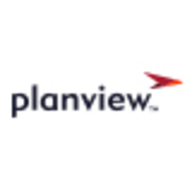

IBM Engineering Lifecycle Management and Planview AgilePlace compete in the project management solutions category. IBM ELM has the upper hand in lifecycle management capabilities, while Planview AgilePlace leads with Agile-focused features.
Features: IBM ELM includes comprehensive engineering lifecycle management features such as requirements management tools, quality management, and change control systems. Planview AgilePlace offers Agile project management with robust visual task boards, flexible planning capabilities, and seamless integrations for iterative workflows.
Room for Improvement: IBM ELM can improve by simplifying its initial setup process and enhancing user experience on cloud deployments. Increasing the usability of its user interfaces may be beneficial. Planview AgilePlace could enhance its functionalities by allowing for more customized reporting. Improving integration capabilities with other enterprise tools and expanding user tutorials would be advantageous.
Ease of Deployment and Customer Service: IBM ELM provides on-premises and cloud deployment options that offer flexibility but require significant initial setup. It’s backed by highly rated customer service. Planview AgilePlace is known for fast cloud deployment and simple onboarding, supported by accessible customer service, making it ideal for smaller teams or those new to Agile practices.
Pricing and ROI: IBM ELM typically involves higher setup costs, reflecting its extensive feature set, but it ensures substantial ROI for large-scale operations. Planview AgilePlace is considered to offer a good balance of cost and functionality, providing significant ROI for Agile-centric teams focusing on rapid deployment and scaling.
| Product | Market Share (%) |
|---|---|
| IBM Engineering Lifecycle Management (ELM) | 4.0% |
| Planview AgilePlace | 1.7% |
| Other | 94.3% |

| Company Size | Count |
|---|---|
| Small Business | 6 |
| Midsize Enterprise | 4 |
| Large Enterprise | 12 |
| Company Size | Count |
|---|---|
| Small Business | 2 |
| Midsize Enterprise | 3 |
| Large Enterprise | 7 |
IBM Engineering Lifecycle Management stands out for its robust Agile Scrum planning, lifecycle traceability, and tool management, offering cloud-based configurability and strong collaboration features.
IBM Engineering Lifecycle Management provides rich capabilities for Agile project management, facilitating requirements and test management, configuration management, and version control. Its integration with IBM Doors supports comprehensive requirements handling, and the cloud-based platform enhances collaborative efficiency across teams. Despite needing advances in user-friendliness and reporting, ELM's global configuration and compliance features make it invaluable in demanding environments.
What are the key features of IBM Engineering Lifecycle Management?IBM Engineering Lifecycle Management is vital in sectors like automotive and manufacturing, where it implements Agile frameworks to manage requirements, conduct testing, and handle defects. It integrates into development pipelines ensuring live traceability and visibility, supporting critical engineering processes efficiently.
Planview AgilePlace is a cloud-based solution designed to provide businesses with a continuous flow of work to help teams accelerate delivery times by visualizing their work with enterprise Kanban boards and lean metrics. Planview offers project managers the visibility, resource management, and real-time analytics necessary to help their teams reduce bottlenecks and dependencies and work more effectively. By using Kanban boards, teams are able to visually track and manage the flow of their work from the strategy level, through implementation up to end-product delivery.
Planview AgilePlace Benefits
Planview helps teams to smoothly implement their strategies by offering its users the following benefits:
Reviews from Real Users
Planview AgilePlace stands out among its competitors for a number of reasons. Several major ones are its user-friendly management pane, the visibility that it provides for its users, and its agile management capabilities.
A manufacturing manager at a large manufacturing company writes, “Using the tool seems to save time versus trying to do things in a regular manner. It is highly collaborative; everybody can see things in one place. It is a highly functional, but pretty simple tool. That is hard to find: A tool that has a lot of functions, but is also simple.”
We monitor all Application Lifecycle Management (ALM) Suites reviews to prevent fraudulent reviews and keep review quality high. We do not post reviews by company employees or direct competitors. We validate each review for authenticity via cross-reference with LinkedIn, and personal follow-up with the reviewer when necessary.